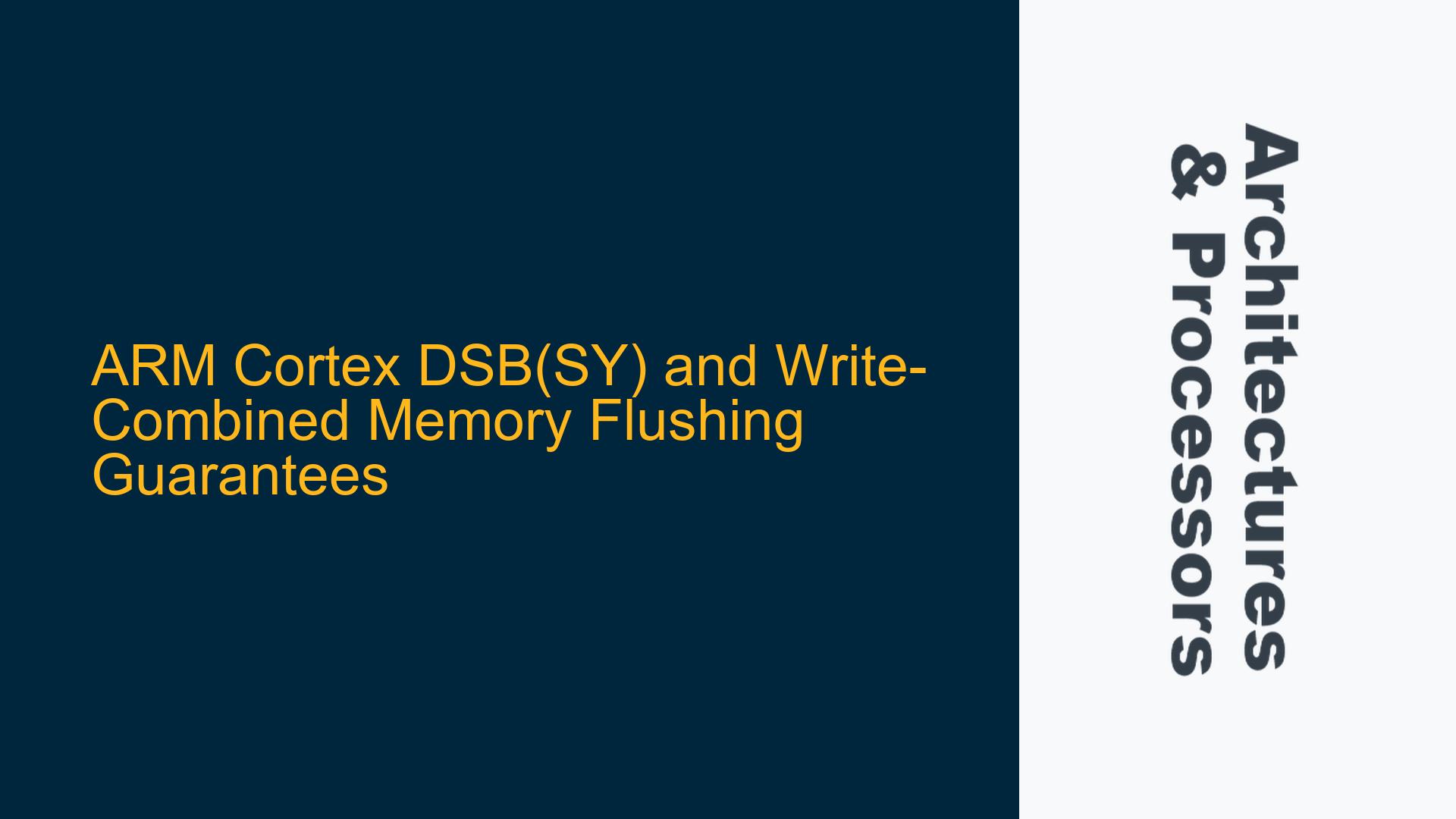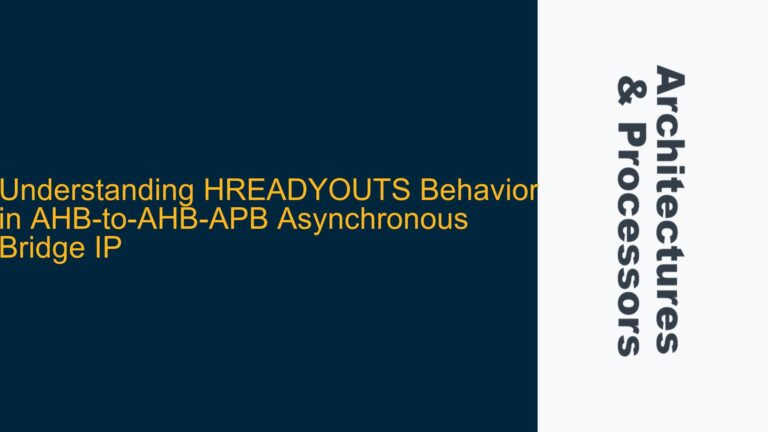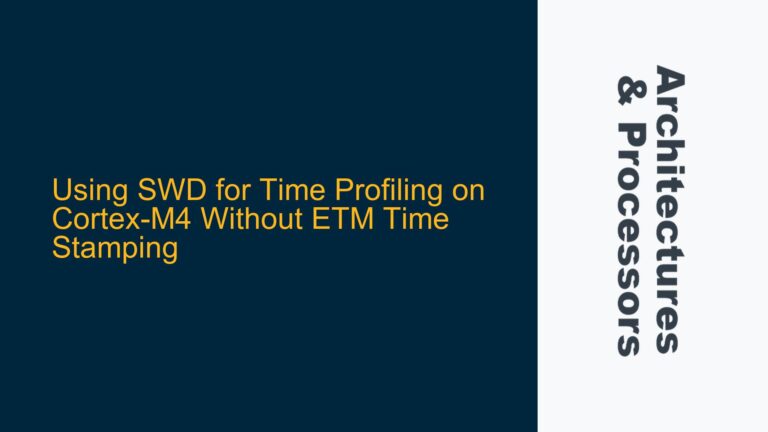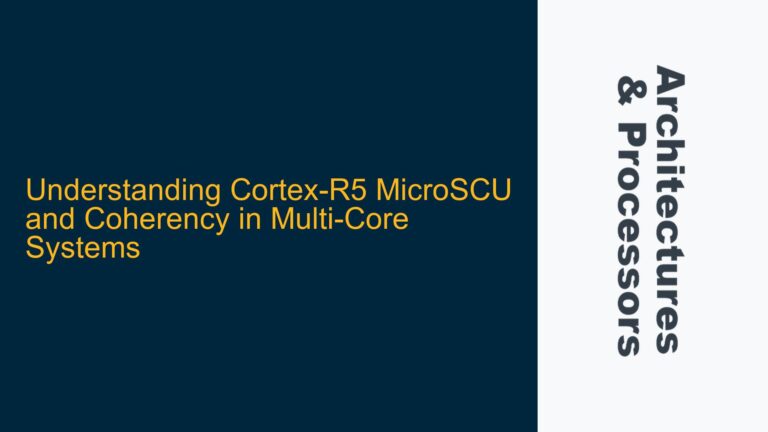ARM Cortex-M4 Cache Coherency Problems During DMA Transfers
In ARM-based embedded systems, ensuring data consistency between the CPU, caches, and external memory is a critical task, especially when dealing with write-combined memory and DMA operations. Write-combined memory is a type of memory mapping that optimizes write performance by combining multiple writes into larger bursts, reducing the number of transactions to the memory bus. However, this optimization introduces challenges when strict ordering or immediate visibility of writes to external devices (such as DMA controllers) is required.
The core issue arises when a sequence of operations involves writing to write-combined memory, followed by a Data Synchronization Barrier (DSB) instruction, and then accessing a hardware register. The question is whether the DSB(SY) instruction guarantees that the write-combined data has been flushed to DDR memory before the subsequent register access is executed. This is particularly important in scenarios where the register access triggers a DMA operation that relies on the data previously written to memory.
Understanding the behavior of DSB(SY) in this context requires a deep dive into ARM’s memory model, cache coherency mechanisms, and the specific characteristics of write-combined memory. The ARM architecture provides several synchronization primitives, including DSB, DMB (Data Memory Barrier), and ISB (Instruction Synchronization Barrier), each serving a distinct purpose in managing memory access ordering and visibility.
Memory Barrier Omission and Cache Invalidation Timing
The primary cause of the issue lies in the misunderstanding of the DSB(SY) instruction’s scope and the behavior of write-combined memory. DSB(SY) ensures that all explicit memory accesses before the barrier are completed before any subsequent instructions are executed. However, this does not necessarily mean that the data has been written to the DDR memory. Instead, DSB(SY) guarantees that the writes have reached the point of coherency, which could still be within the CPU’s cache hierarchy.
Write-combined memory bypasses the normal cache write-back mechanism, but the data may still reside in a write-combining buffer or a write buffer within the memory system. These buffers are designed to aggregate writes to improve performance, but they introduce a delay between the CPU issuing the write and the data being committed to DDR memory. This delay can cause problems when the subsequent register access depends on the data being fully written to memory.
Another contributing factor is the lack of explicit cache management. If the write-combined memory region is cached, the data may remain in the cache even after the DSB(SY) instruction is executed. In such cases, a cache flush operation is required to ensure that the data is written to DDR memory. The ARM architecture provides cache maintenance operations, such as Clean and Invalidate, which can be used to force data out of the cache and into memory.
The timing of cache invalidation is also critical. If the cache is flushed too early, the data may not yet be ready to be written to memory. If it is flushed too late, the subsequent register access may occur before the data is committed, leading to incorrect behavior. Properly synchronizing these operations requires a thorough understanding of the memory system and the specific requirements of the application.
Implementing Data Synchronization Barriers and Cache Management
To address the issue of ensuring that write-combined writes are flushed to DDR memory before a subsequent register access, a combination of data synchronization barriers and cache management operations must be used. The following steps outline a robust solution:
-
Use DSB(SY) to Ensure Write Completion: The DSB(SY) instruction should be used to ensure that all previous memory writes, including those to write-combined memory, have reached the point of coherency. This ensures that the writes are no longer pending in the CPU’s pipeline or write buffers.
-
Flush the Cache if Necessary: If the write-combined memory region is cached, a cache flush operation must be performed to ensure that the data is written to DDR memory. This can be done using the ARMv8 cache maintenance instructions, such as DC CVAC (Data Cache Clean by Virtual Address to Point of Coherency) or DC CVAU (Data Cache Clean by Virtual Address to Point of Unification). These instructions clean the cache, ensuring that any dirty data is written to memory.
-
Use DMB to Ensure Memory Access Ordering: In some cases, a Data Memory Barrier (DMB) may be required to ensure that memory accesses are properly ordered. The DMB instruction ensures that all memory accesses before the barrier are completed before any memory accesses after the barrier are started. This is particularly important in multi-core systems where different cores may be accessing the same memory regions.
-
Verify the Memory System Configuration: Ensure that the memory system is properly configured to support write-combined memory and that the cache policies are correctly set. This includes verifying that the memory region is mapped as write-combined and that the cache is configured to treat the region as non-cacheable or write-through.
-
Test and Validate the Implementation: After implementing the above steps, thoroughly test the system to ensure that the data is being correctly written to DDR memory and that the subsequent register access occurs only after the data is committed. This may involve using debug tools to monitor memory accesses and verify the timing of operations.
By following these steps, developers can ensure that write-combined writes are properly flushed to DDR memory before subsequent register accesses, preventing data corruption and ensuring correct system behavior. This approach leverages the ARM architecture’s synchronization and cache management features to achieve reliable and efficient memory operations.
In conclusion, the DSB(SY) instruction alone does not guarantee that write-combined writes are flushed to DDR memory. A combination of data synchronization barriers, cache management operations, and proper memory system configuration is required to ensure data consistency and correct system behavior. Understanding the nuances of ARM’s memory model and the specific requirements of the application is key to implementing a robust solution.





